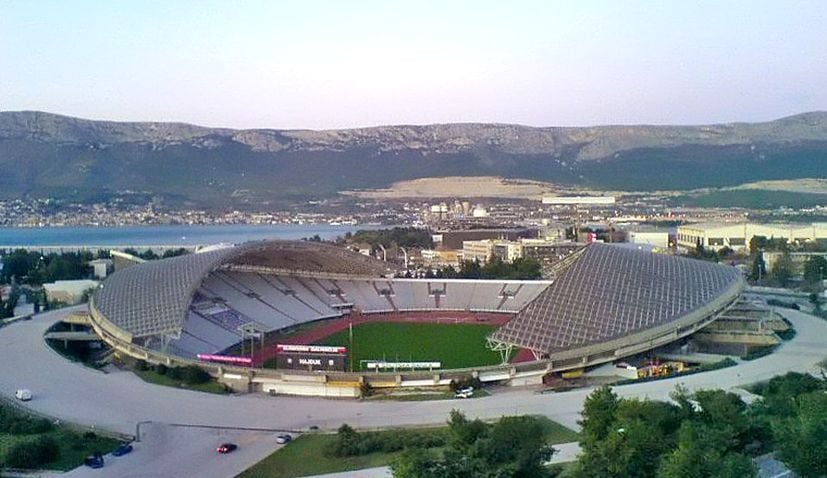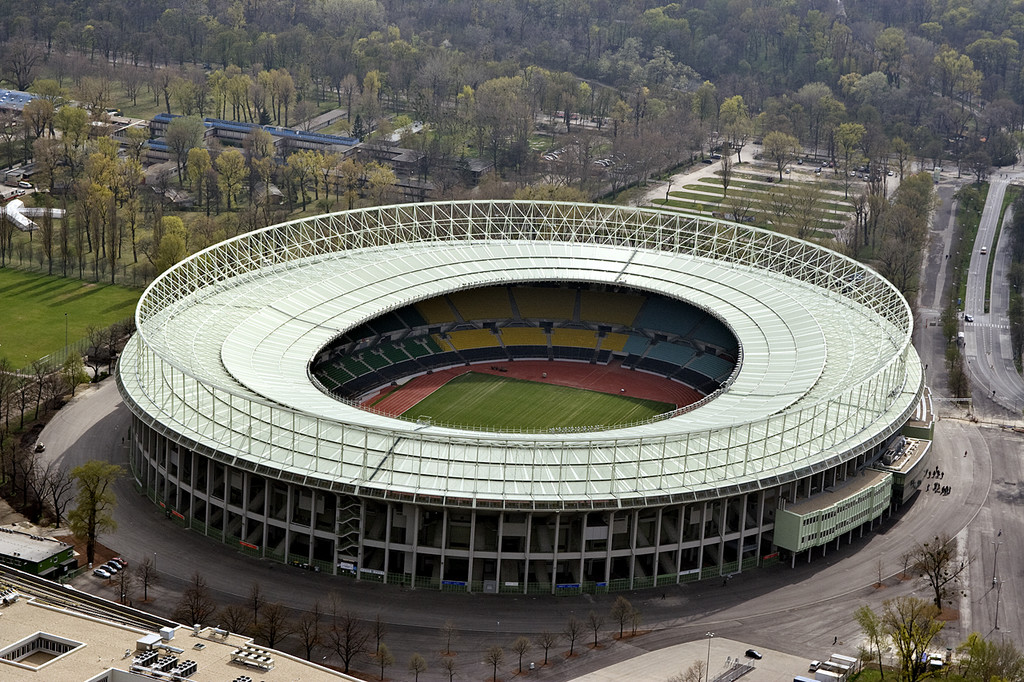“Football Stadiums Worth Visiting in Croatia
Related Articles Football Stadiums Worth Visiting in Croatia
Football Stadiums Worth Visiting in Croatia

Croatia, a land celebrated for its stunning Adriatic coastline, historic cities, and vibrant culture, also boasts a passionate footballing tradition. While the Croatian First Football League (Prva HNL) may not be as globally renowned as the Premier League or La Liga, the atmosphere and history within its stadiums are captivating and offer a unique experience for football enthusiasts. For those planning a trip to Croatia and keen to delve into its sporting heart, here are some football stadiums worth visiting:
1. Stadion Maksimir (Zagreb)
- Home Team: GNK Dinamo Zagreb
- Capacity: Approximately 35,000
The Stadion Maksimir, located in the capital city of Zagreb, is arguably the most iconic and historically significant football stadium in Croatia. It serves as the home ground for GNK Dinamo Zagreb, the country’s most successful club, and also hosts many Croatian national team matches.
History and Significance:
The stadium’s history dates back to 1912, although it has undergone numerous renovations and expansions over the years. It holds a special place in Croatian sporting history due to several key events:
- The 1990 Riot: The Maksimir Stadium was the site of a notorious riot on May 13, 1990, during a match between Dinamo Zagreb and Red Star Belgrade. This event is often seen as a precursor to the Croatian War of Independence and a symbol of Croatian resistance against Serbian dominance within Yugoslavia.
- National Team Matches: Over the decades, the Maksimir has hosted countless memorable matches for the Croatian national team, witnessing moments of triumph and heartbreak.
Atmosphere and Experience:
Attending a match at the Maksimir is an immersive experience. The stadium’s passionate supporters, known as the "Bad Blue Boys," create an electric atmosphere with their chants, songs, and displays of loyalty. Even though the stadium is ageing, the atmosphere more than makes up for it.

Things to Do Nearby:
- Explore Maksimir Park: Adjacent to the stadium is the beautiful Maksimir Park, one of the oldest and largest public parks in Europe. It’s perfect for a pre- or post-match stroll.
- Visit the Zagreb Zoo: Located within Maksimir Park, the Zagreb Zoo is a popular attraction for families.
- Discover Zagreb City Center: The stadium is well-connected to Zagreb’s city center, where you can explore historic landmarks, museums, and vibrant cafes.
2. Stadion Poljud (Split)
- Home Team: HNK Hajduk Split
- Capacity: Approximately 34,000
The Stadion Poljud, situated in Split, is another iconic Croatian football stadium. It is the home ground of HNK Hajduk Split, a club with a rich history and a fiercely loyal following.
History and Significance:
Built for the 1979 Mediterranean Games, the Stadion Poljud is an architectural masterpiece. Its unique seashell-like design and stunning location overlooking the Adriatic Sea make it one of the most visually striking stadiums in Europe.
Atmosphere and Experience:
Hajduk Split’s fans, known as the "Torcida," are renowned for their passion and unwavering support. Attending a match at the Poljud is an unforgettable experience, with the stadium reverberating with chants, flares, and the raw emotion of the fans. The "North Stand" is where the Torcida reside, and it is not for the faint of heart.
Things to Do Nearby:
- Explore Diocletian’s Palace: Split is famous for Diocletian’s Palace, a UNESCO World Heritage site. Explore the ancient ruins, wander through its narrow streets, and soak in the history.
- Relax on Bacvice Beach: Located near the city center, Bacvice Beach is a popular spot for swimming and sunbathing.
- Take a Ferry to the Islands: Split is a major ferry hub, making it easy to visit nearby islands like Hvar, Brac, and Vis.
3. Stadion Rujevica (Rijeka)
- Home Team: HNK Rijeka
- Capacity: Approximately 8,279
The Stadion Rujevica, located in Rijeka, is a modern and intimate football stadium. It serves as the home ground for HNK Rijeka, a club that has risen in prominence in recent years.
History and Significance:
The stadium was built in 2015 as a temporary solution while a new stadium was planned for Kantrida. However, due to its modern facilities and intimate atmosphere, it has become a beloved home for HNK Rijeka and its fans.
Atmosphere and Experience:
The Stadion Rujevica offers a unique and intense matchday experience. Its compact design ensures that fans are close to the action, creating a lively and passionate atmosphere. HNK Rijeka’s supporters are known for their vocal support and unwavering loyalty.
Things to Do Nearby:
- Explore Rijeka City Center: Rijeka is a vibrant port city with a rich history and culture. Explore its historic landmarks, museums, and bustling waterfront.
- Visit Trsat Castle: Perched on a hill overlooking Rijeka, Trsat Castle offers stunning views of the city and the Adriatic Sea.
- Relax on the Beaches: Rijeka is surrounded by beautiful beaches, perfect for swimming, sunbathing, and enjoying the Mediterranean atmosphere.
4. Stadion Gradski vrt (Osijek)
- Home Team: NK Osijek
- Capacity: Approximately 13,000
The Stadion Gradski vrt, located in Osijek, is a traditional football stadium with a long history. It serves as the home ground for NK Osijek, a club with a loyal following in eastern Croatia.
History and Significance:
The stadium has been the home of NK Osijek since 1958 and has undergone several renovations over the years. It holds a special place in the hearts of Osijek fans, who have witnessed countless memorable matches within its walls.
Atmosphere and Experience:
Attending a match at the Stadion Gradski vrt is a traditional football experience. The stadium’s passionate supporters create a lively atmosphere, with their chants and songs echoing throughout the stands.
Things to Do Nearby:
- Explore Osijek City Center: Osijek is a historic city with a rich cultural heritage. Explore its historic landmarks, museums, and charming streets.
- Visit the Tvrda Fortress: The Tvrda Fortress is a well-preserved 18th-century fortress located in the heart of Osijek.
- Explore the Kopački Rit Nature Park: Located near Osijek, the Kopački Rit Nature Park is a vast wetland area that is home to a diverse array of flora and fauna.
5. Stadion Aldo Drosina (Pula)
- Home Team: NK Istra 1961
- Capacity: Approximately 8,923
The Stadion Aldo Drosina, located in Pula, is a modern and well-equipped football stadium. It serves as the home ground for NK Istra 1961, a club that represents the Istrian peninsula.
History and Significance:
The stadium was named after Aldo Drosina, a prominent footballer and coach from Pula. It has undergone significant renovations in recent years, making it one of the most modern stadiums in Croatia.
Atmosphere and Experience:
The Stadion Aldo Drosina offers a comfortable and enjoyable matchday experience. The stadium’s modern facilities and passionate supporters create a lively atmosphere.
Things to Do Nearby:
- Explore the Pula Arena: The Pula Arena is a well-preserved Roman amphitheater that dates back to the 1st century AD.
- Visit the Temple of Augustus: The Temple of Augustus is a Roman temple located in the heart of Pula.
- Relax on the Beaches: Pula is surrounded by beautiful beaches, perfect for swimming, sunbathing, and enjoying the Mediterranean atmosphere.
Tips for Visiting Croatian Football Stadiums:
- Purchase Tickets in Advance: Especially for popular matches, it’s advisable to purchase tickets in advance, either online or through the club’s ticket office.
- Arrive Early: Arriving early allows you to soak in the atmosphere, explore the stadium surroundings, and avoid any potential queues.
- Learn Some Basic Croatian Phrases: Knowing a few basic Croatian phrases can enhance your interactions with locals and show your respect for the culture.
- Be Aware of Local Customs: Be mindful of local customs and traditions, especially when it comes to chanting and behavior within the stadium.
- Enjoy the Local Cuisine: Take advantage of the opportunity to sample local Croatian cuisine, both inside and outside the stadium.
Conclusion:
Visiting football stadiums in Croatia offers a unique and rewarding experience for football enthusiasts. From the iconic Stadion Maksimir in Zagreb to the stunning Stadion Poljud in Split, each stadium has its own history, atmosphere, and charm. Whether you’re a die-hard football fan or simply looking to immerse yourself in Croatian culture, a visit to one of these stadiums is sure to be a memorable experience. So, plan your trip, grab a ticket, and get ready to cheer on the local team!

